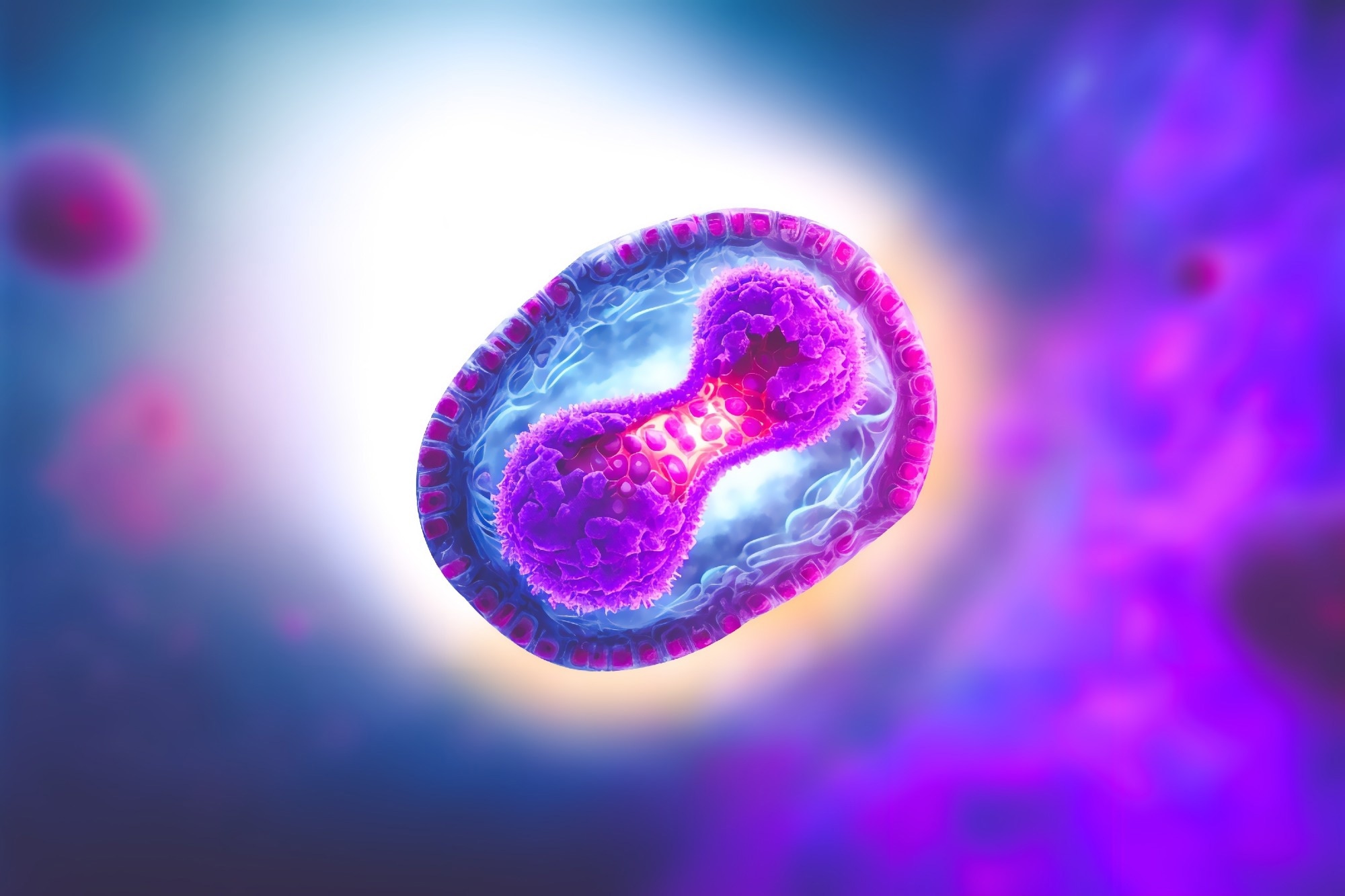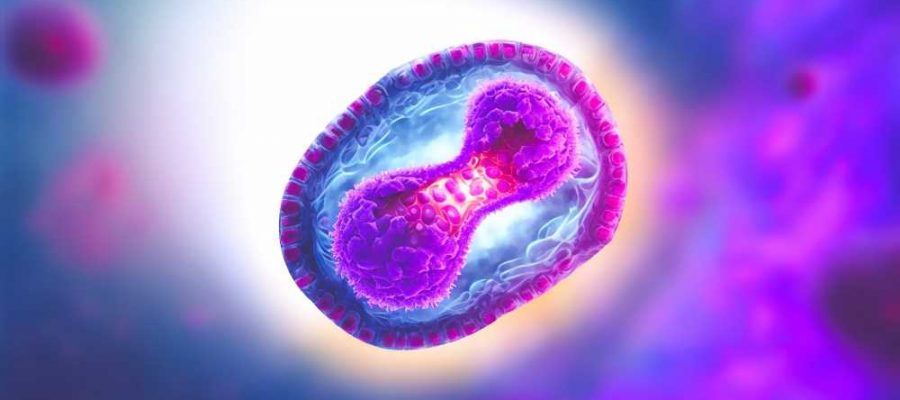In a recent study posted to the medRxiv* preprint server, researchers in the United Kingdom developed a pooled enzyme-linked immunosorbent (ELISA) assay using mpox (MPX) virus (MPXV) antigens and vaccinia virus (VACV) antigens. They also assessed humoral responses to and identification of antigens of MPXV IIa clade and IIb clade, in comparison to recipients of smallpox vaccines (ACAM2000 and IMVANEX).
The MPXV outbreak in 2022 was primarily confined to gay, bisexual, and other men who had sex with men in non-endemic nations without a travel history to endemic areas. As a result, healthcare agencies and governments offered IMVANEX vaccinations to MPX patients to confer protection and curtail MPXV transmission.
 Study: Analogous humoral antigen recognition between Monkeypox-infected and Smallpox-vaccinated individuals. Image Credit: CI Photos / Shutterstock
Study: Analogous humoral antigen recognition between Monkeypox-infected and Smallpox-vaccinated individuals. Image Credit: CI Photos / Shutterstock
About the study
In the present study, researchers developed a pooled antigen ELISA using 24 recombinant mpox virus (clade II) antigens and three recombinant vaccinia virus antigens to assess antibody responses induced by smallpox vaccines or MPX.
Panels of sera obtained from single-dose, double-dose, and triple-dose ACAM2000 or IMVANEX vaccinees and individuals with MPX history were tested against the MPXV and VACV antigens. Pearson correlation analysis and PCA (principal component analysis) was performed, and ROC (receiver operator curve) curves were used to elucidate humoral responses to MPXV and VACV infections.
People with prior or imminent IMVANEX vaccinations were recruited from UKHSA Porton Down. Eighteen individuals who were scheduled to receive IMVANEX doses were sampled prior to their prime vaccination, and eight individuals were bled after 24.0 days of dose one. Further, 10, seven, eight, and seven individuals were sampled after 14.0 days, 43.0 days, 63.0 days, and 84.0 days of the second dose. In addition, two individuals vaccinated with IMVANEX >3.0 years before, scheduled to receive the third (booster) dose, were sampled after two weeks of the second dose.
Moreover, sera were obtained from four singe-dose ACAM2000 vaccinees and one multiple-dose ACAM2000 vaccinee, recruited from the US CDC (Centers for Disease Control and Prevention) Poxvirus and Rabies branch. The team also obtained serological samples from 43 MPX convalescent individuals, with polymerase chain reaction (PCR)-confirmed MPXC clade IIb infections, from the NHS (national health service) trust’s rare and imported pathogens laboratory and the NHS foundation trust of the Chelsea and Westminster hospital. In addition, the team obtained sera from three individuals with MPXV clade IIa infections in 2018 and the following year from prior imported MPX cases.
Further, 256 pediatric serological samples were provided by the UKHSA SEU (seroepidemiology unit) in Manchester. Confounder sera were obtained from individuals with polymerase chain reaction-confirmed cytomegalovirus infections (99 individuals), Epstein-Barr virus infections (100 individuals), and varicella-zoster virus infections (100 individuals) with sera from Rheumatoid factor-positive individuals (100 individuals) to evaluate specificity. ELISA was performed with individual antigens, followed by pooled antigen ELISA using MPXV antigens E8, B8, A35, B2, and VACV antigen B5.
Results
Drug Discovery eBook

Single-dose smallpox vaccinations induced low antibody responses, mainly against MPXV antigen B2, which were considerably greater after the second vaccination dose, including induction of antibody titers against MPXV antigens E8, B5, A35, and M1. Prior to MPX, clade IIa and clade IIb MPXV induced varying responses, but likewise, induced antibodies against poxvirus antigens among smallpox vaccinees, with additional antibodies against MPXV H3, A27, and A29.
MPXV antigen A27 was identified as the differential antigen between IMVANEX vaccinees and MPXV-positive individuals, and VACV L1 (MPXV M1) as a serological biomarker of IMVANEX vaccinations. After utilizing recombinant VACV/MPXV homologs, the team observed differences in antigen-antibody binding, varying on the basis of an individual’s originating vaccination/infection.
MPXV patients and smallpox vaccinees mounted antibodies capable of binding to diverse albeit core poxviruses’ antigens, highlighting the implications for developing vaccine [such as mRNA (messenger ribonucleic acid)-based vaccines] and treatment option [such as monoclonal antibodies (mAbs)] targets.
Sera from two-dose IMVANEX vaccinees showed strong and positive correlations with ACAM2000 vaccinees and MPX convalescents (with clade IIa and IIb MPXV infections) and with each other. MPX patients correlated strongly with one another and with smallpox vaccinees. The triple-dose IMVANEX vaccinees showed similar antibody binding to MPXV and VACV antigens as the two-dose IMVANEX vaccinees. MPXV and VACV homologs correlated strongly correlated with one another in all groups: VACV B5 with MPXV B6, VACV A33 with MPXV A35, and VACV A27 with MPXV A29.
The pooled antigen ELISA showed a sensitivity and specificity of 97% and 98%, respectively, in identifying anti-poxvirus antibodies and could be used to assess longitudinal humoral responses after vaccination and MPXV infections. In addition, the pooled antigen ELISA was the only ELISA showing significantly greater antibody titers among single-dose vaccinees compared to negative samples.
Overall, the study findings showed analogous antigen identification between smallpox vaccinees and MPX convalescents. The pooled MPXV and VACV antigen ELISA showed higher sensitivity and specificity compared to ELISA performed using individual antigens. Therefore, the pooled antigen ELISA could offer a reliable method for measuring humoral responses after infection/vaccination, eliminating the requirement of complete-virus ELISA tests and neutralization assays using live viruses. In addition, the pooled antigen ELISA could be used for developing and evaluating next-generation vaccines.
*Important notice
medRxiv publishes preliminary scientific reports that are not peer-reviewed and, therefore, should not be regarded as conclusive, guide clinical practice/health-related behavior, or treated as established information.
Delighted to say our #Monkeypox/#MPOX paper is now out as a preprint: https://t.co/VrYLPsf3Se
It's a bit of a beast, but a thread of the results we've found…�� @EPS_Porton
— Ash Otter (@asherichia) December 27, 2022
- Analogous humoral antigen recognition between Monkeypox-infected and Smallpox-vaccinated individuals. Ashley D. Otter et al. medRxiv preprint 2023, DOI: https://doi.org/10.1101/2022.12.22.22283648, https://www.medrxiv.org/content/10.1101/2022.12.22.22283648v1
Posted in: Men's Health News | Medical Science News | Medical Research News | Disease/Infection News | Pharmaceutical News
Tags: Antibodies, Antibody, Antigen, Assay, Biomarker, Cytomegalovirus, ELISA, Enzyme, Epstein-Barr Virus, Healthcare, Hospital, Laboratory, Monkeypox, Polymerase, Polymerase Chain Reaction, Rabies, Rheumatoid Factor, Ribonucleic Acid, Smallpox, Vaccine, Vaccinia Virus, Virus

Written by
Pooja Toshniwal Paharia
Dr. based clinical-radiological diagnosis and management of oral lesions and conditions and associated maxillofacial disorders.
Source: Read Full Article
